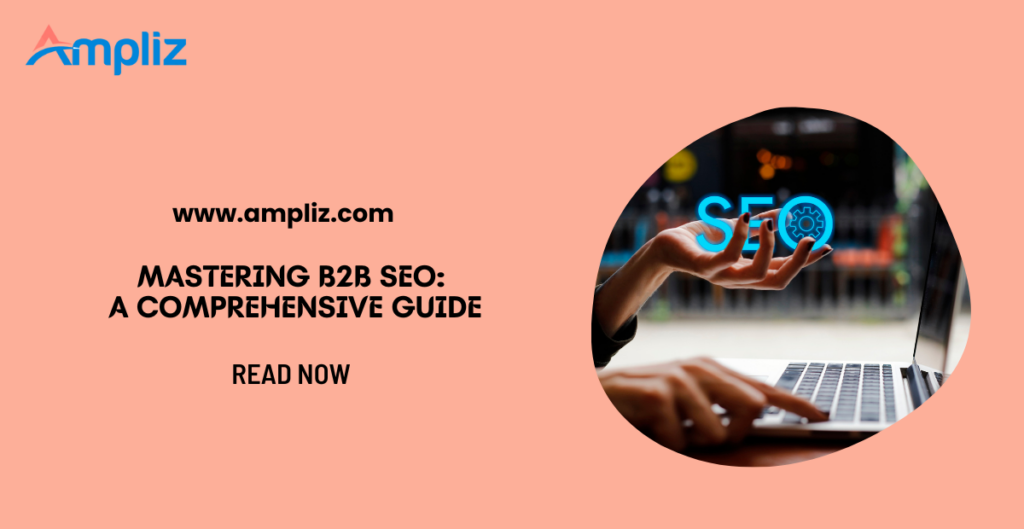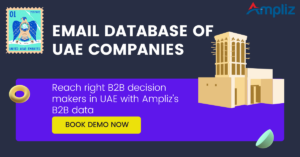In today’s digital-first business environment, mastering the art of B2B (business-to-business) SEO is no longer an option but a necessity. Unlike its B2C (business-to-consumer) counterpart, B2B SEO targets the needs, concerns, and search behaviors of businesses and decision-makers, requiring a more precise and sophisticated approach. This comprehensive guide is tailored to help B2B marketers and business owners navigate the complexities of SEO to enhance their online visibility and attract more qualified leads.
Introduction to B2B SEO
B2B SEO stands for business-to-business search engine optimization, which involves optimizing your website and content to improve visibility in search engine results for business-specific searches. The importance lies in its ability to drive high-quality, targeted traffic to your site, which is essential for generating leads, building brand authority, and ultimately, closing sales. In an era where business buyers increasingly rely on digital channels to research solutions, B2B SEO is pivotal in positioning your brand in front of the right audience at the right time.
Key Differences Between B2B and B2C SEO Strategies
While the underlying principles of SEO apply to both B2B and B2C, several key differences must be acknowledged:
- Length of Sales Cycle: B2B decisions often involve longer sales cycles and multiple stakeholders, necessitating content that addresses each stage of the journey.
- Keyword Complexity: B2B SEO targets more niche, industry-specific keywords and long-tail phrases aligned with business queries.
- Content Depth: B2B content must delve deeper into technical topics, catering to an informed and professional audience.
- Goals and Metrics: B2B SEO strategies often prioritize lead quality and conversion rates over mere traffic volume.
Understanding B2B Buyer Personas
In B2B SEO, understanding your buyer persona is crucial. Buyer personas represent your ideal customers and help tailor your SEO and content strategy to meet their specific needs, concerns, and search behaviors. This alignment increases the relevance and attractivity of your content, improving both traffic quality and engagement.
How to Identify and Utilize Personas for SEO
Creating accurate buyer personas involves:
- Research: Combining market research, insights from your sales and customer service teams, and analysis of current clients.
- Segmentation: Identifying different groups within your audience based on their roles, industries, and challenges.
- Application: Using these insights to guide keyword research and content creation, ensuring each piece speaks directly to the concerns and interests of your target personas.
Advanced Keyword Research Techniques
Leveraging advanced tools like SEMrush, Ahrefs, and Moz is essential for uncovering keywords that your B2B audience is searching for. These platforms provide insights into search volume, competition, and keyword relevance, allowing you to identify both broad and niche keywords pertinent to your business and industry.
Strategies for Targeting Long-Tail Keywords and High-Intent Search Queries
Focusing on long-tail keywords and high-intent queries is vital:
- Long-Tail Keywords: These are longer and more specific keyword phrases. They have lower search volumes but higher conversion rates as they target users closer to a purchase decision.
- High-Intent Queries: These queries indicate a strong buying intent. Identify and optimize content for these queries to capture prospects actively seeking solutions.
Optimizing Website Structure and On-page Elements
A well-structured website enhances both user experience and SEO. Ensure your site hierarchy is logical, with a clear navigation path that allows visitors (and search engines) to easily find information. This structure should cater to the information-seeking behaviors of B2B searchers, emphasizing clarity and accessibility.
On-page SEO Tactics Tailored to B2B Audiences
On-page SEO involves optimizing individual web pages to rank higher and earn more relevant traffic. Key tactics include:
- Title Tags and Meta Descriptions: Incorporate targeted keywords while clearly describing the page’s content.
- Header Tags (H1, H2, H3): Use these to structure your content effectively, making it easier for readers to navigate and for search engines to understand your page’s hierarchy.
- Keyword Optimization: Strategically incorporate keywords into your page’s content, ensuring it reads naturally and provides value to the audience.
The Importance of High-Quality, Niche-Specific Content
Content marketing plays a pivotal role in B2B SEO, drawing in prospects through valuable, relevant content. This content must address the specific needs and pain points of your buyer personas, offering insights, solutions, and valuable information that positions your brand as a thought leader in your industry.
Types of Content That Resonate with B2B Decision-Makers
Successful B2B content strategies include a mix of formats, such as:
- In-depth blog posts and articles that provide actionable insights.
- Whitepapers and eBooks offering detailed exploration of industry issues or trends.
- Case studies and testimonials showcasing real-life success stories and the value of your offerings.
- Webinars and instructional videos that engage and inform on a more personal level.
Link Building for B2B Markets
Link building is a critical component of B2B SEO because it signals to search engines that other websites consider your content valuable enough to link to. High-quality backlinks can dramatically enhance your authority in a particular realm, leading to better search rankings and increased traffic.
Effective B2B Link Building Strategies
The path to acquiring quality backlinks in the B2B sector includes:
- Guest Posting: Contributing high-quality content to reputable industry sites can earn backlinks and expose your brand to a wider audience.
- Creating Shareable Resources: Develop infographics, industry reports, or tools that provide value and are likely to be shared and linked to by others.
- Networking: Building relationships with industry influencers and participating in online communities can lead to natural backlink opportunities.
Measuring and Analyzing B2B SEO Results
When analyzing your B2B SEO efforts, focus on metrics that align with business objectives, such as:
- Lead Generation: Track the quantity and quality of leads generated through SEO efforts.
- Conversion Rates: Monitor how many visitors are taking desired actions, such as filling out contact forms or downloading whitepapers.
- Organic Traffic: Assess the volume of visitors coming from search engines and their behavior on your site.
- Search Rankings: Keep an eye on where your pages rank for targeted keywords.
Tools for Tracking B2B SEO Performance
Utilize tools such as Google Analytics, Google Search Console, and SEMrush to track your SEO performance. These tools provide invaluable data that can help fine-tune your strategy.
Local and International SEO Considerations for B2B Companies
If your B2B company serves specific geographic locations, local SEO is important. Ensure your business is listed on Google My Business and other relevant local directories. Use location-specific keywords and create content that resonates with local audiences. To track local keyword performance, the best keyword tracking software, like Ahrefs or SEMrush, can provide valuable insights into regional rankings.
International B2B SEO Strategies
For those targeting multiple countries or languages, international SEO is key. This includes implementing hreflang tags for language targeting, choosing the right domain structure (such as ccTLDs, subdomains, or subdirectories), and creating culturally relevant content for each audience.
Emerging Trends in B2B SEO
With the rise of voice assistants, optimizing for voice search is becoming more important. Since voice searches are typically conversational and question-based, incorporate natural language keywords and FAQ content into your strategy.
AI and Machine Learning
AI and machine learning are beginning to play a larger role in SEO. Embrace tools that utilize these technologies to uncover insights, predict trends, and personalize content.
Common Pitfalls to Avoid in B2B SEO
Creating content for the sake of keywords rather than offering real value can lead to penalties from search engines. Focus on providing detailed, informative content that serves users’ needs.
Ignoring Mobile Optimization
With mobile search on the rise, ensure your website is mobile-friendly. Google’s mobile-first indexing means that mobile versions of websites are prioritized in search results. Using a mobile rank tracking tool can help you monitor how well your pages perform on mobile devices, ensuring you stay competitive in mobile search rankings.
Conclusion
You can’t just wing B2B SEO; it takes a deeper understanding of your audience and a sincere effort to produce top-notch content that users love. It’s a continuous journey that calls for a thoughtful approach. If B2B companies want to kill it in search engine rankings and haul in leads by the boatload, they need to hire a professional B2B SEO agency like Nine Peaks that mastered the latest techniques and rides the waves of algorithm updates.
Adapt your SEO strategy as the search landscape shifts and your business goals evolve – it’s an ongoing process that requires flexibility and responsiveness. Play SEO tag with your competitors – constantly researching, testing, and fine-tuning your B2B strategy to stay one step ahead.



